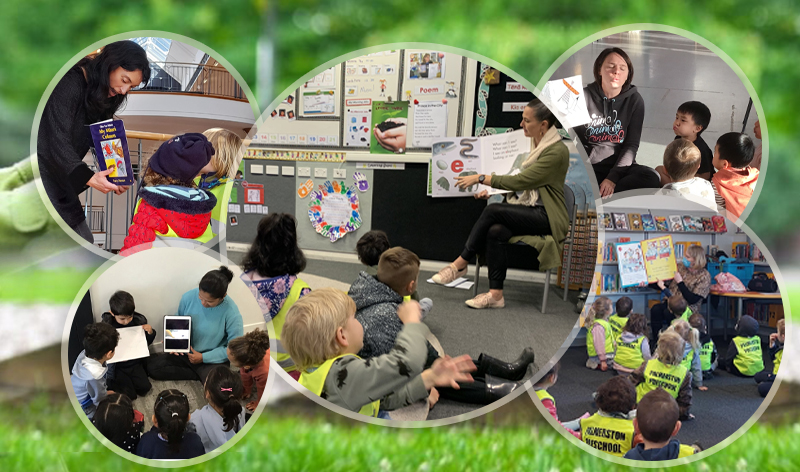How Storytelling can Enhance Your Child’s Development and Learning?
A lot of people think that story time is just sitting down and reading a book. Storytelling is an age-old tradition that has been passed down from generation to generation. Story time is a great way to give your tamariki an engaging and fun experience. It is a powerful tool that can be used to engage children and help them understand complex topics in a fun and entertaining way.
Storytelling has many benefits for children, such as fostering imagination, developing language skills, boosting creativity, and improving communication skills. By engaging in storytelling, tamariki can learn valuable lessons about life such as empathy, resilience, and courage. It can be used to help children learn new concepts, also helps them to better understand the world around them and make sense of their own experiences.
How to make Story Time exciting for Children-
With the right activities and techniques, story time can become an enjoyable part of your day and a fun and engaging experience for you and your tamariki.
- Let your child pick the story- Let your children decide which story they want to listen. When you read their chosen book with them, it gives them a sense of independence.
- Use expression- When you start reading, try to mix up your facial expression, use your hands, and make eye contact. By this, tamariki can imagine them with story characters and can improvise.
- Do the voices- When you imitate a word like Meow, Hiss, Boom, your tamariki will start coping with you to make every character sound unique. This will help them to engage and feel the story.
- Ask questions- Asking questions is a good way to encourage two-way communication and see if your children understand what you read to them. You can ask questions, like ‘What is this?’, ‘What is the man doing?’, ‘What colour is the flower?’ etc.
The Role of Characters in Telling Stories to Children-
Characters are an integral part of storytelling. They are the ones who bring stories to life and help us connect with the characters in a story. For tamariki, characters can be particularly important in helping them understand the story and its moral lessons. Characters can also help kids learn about different cultures, values, and beliefs.
By learning about different characters, tamariki can develop empathy and understanding for people who are different from them. Through characters, stories become more engaging and entertaining. Some children’s books have short, simple stories with one or two characters. These types of characters can be found in picture books like Dr. Seuss’ How the Grinch Stole Christmas and Goodnight Moon.
The message of these stories is more about a specific moral lesson than it is about the characters themselves, so tamariki may learn about something like being compassionate for others without learning much about who these different characters actually are.
Enhancing Problem-Solving Skills through Listening and Analysing Stories-
Children can improve their ability to solve problems by listening to and analysing stories. Tamariki can gain important lessons about the value of teamwork and communication by comprehending how characters in a story communicate, resolve disputes, and reach resolutions. Through these activities, tamariki can learn how to dissect issues into their component pieces, locate potential answers, and devise original approaches to various difficulties. Listen to these favourite storytellers, and then consider the methods they employed to solve their issues.
The Psychological Benefits of Storytelling for Children-
Since ancient times, storytelling has been used to transmit information and morals from one generation to the next. Beyond that, though, it has also been demonstrated to have a favourable effect on tamariki’s psychological growth. Children can acquire empathy, problem-solving abilities, and a greater awareness of their surroundings by engaging with stories.
The Educational Benefits of Storytelling for Children-
- Literacy Development- Children’s vocabulary, understanding, and language skills all grow as a result of listening to stories and this can help them become better readers and writers.
- Cognitive Development- Storytelling can enhance one’s capacity for memory, focus, and problem-solving. Through interaction with tales, tamariki can develop their ability to recognise patterns, create connections, and exercise critical thinking.
- Social-Emotional Development- Storytelling may educate youngsters about various emotions while also fostering their growth in empathy and comprehension.
- Motivation to Learn- Stories may make learning more interesting and engaging, encouraging tamariki to learn and explore new concepts.
- Imagination and Creativity- Storytelling fosters imagination and creativity, two qualities that are crucial for a tamariki’s growth. Children’s creativity and problem-solving abilities can be developed by having them imagine various worlds and characters.
- Role Models- Stories often feature positive role models, helping children learn about qualities such as kindness, bravery, and perseverance.
Overall, storytelling is a valuable educational tool that can enhance your tamariki’s development and learning in numerous ways and it is an enjoyable and effective way to engage with your children and help them grow and learn. It can also help to strengthen a parent-child relationship.

